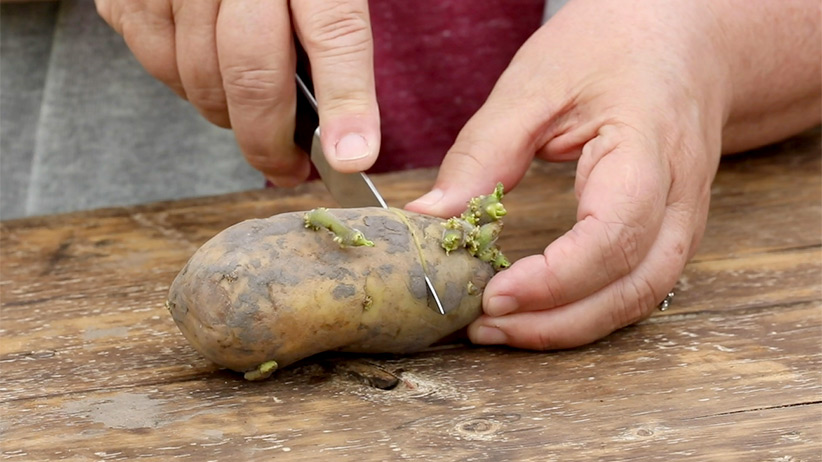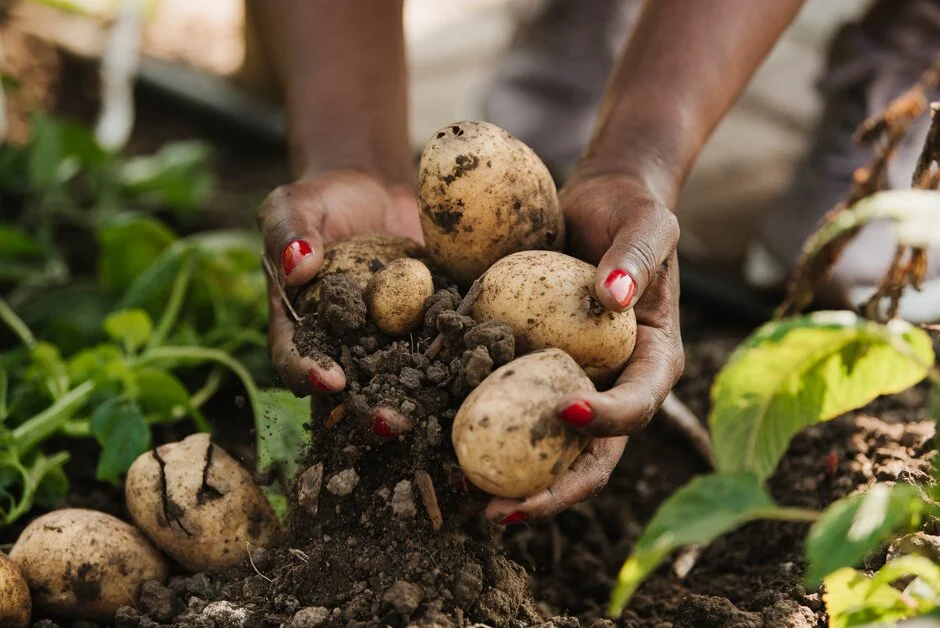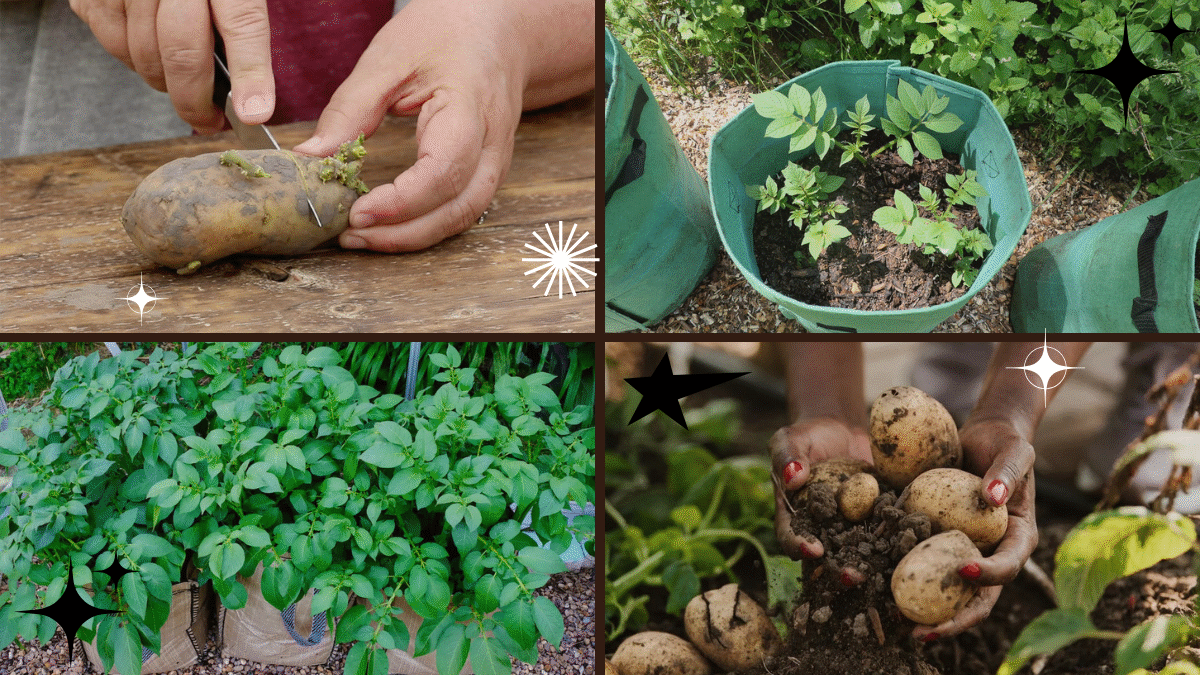If you’ve always loved the idea of harvesting fresh, homegrown potatoes but thought you needed a huge backyard or a patch of land — think again. Growing potatoes in containers is one of the easiest and most rewarding ways to cultivate this versatile crop. With the right container, quality soil, and a little patience, you can enjoy a bountiful harvest even on a small patio, balcony, or urban garden.
This complete guide will walk you through how to plant potatoes in containers effectively, from choosing the right varieties to harvesting your fresh spuds.

Why Grow Potatoes in Containers?
Container gardening isn’t just for flowers and herbs. In fact, potatoes thrive in containers when provided with proper care. Here’s why it’s a fantastic idea:
- Space-saving: Ideal for patios, balconies, or small gardens.
- Easier pest control: Containers protect against soil-borne diseases and pests.
- No digging required: Just tip the container over at harvest time.
- Control over soil quality: Perfect for areas with poor or heavy clay soils.
- Fun and educational: Great for kids and beginners to watch potatoes grow from seed tubers.

Choosing the Best Potato Varieties for Containers
Not all potatoes are created equal when it comes to container growing. The best choices are usually early or second early varieties, as they mature quickly and yield generously in confined spaces.
Recommended Potato Varieties:
- Yukon Gold: Delicious, creamy texture.
- Red Pontiac: Excellent for boiling and mashing.
- Fingerling Potatoes: Unique shapes and colors, perfect for roasting.
- Charlotte (UK): Classic salad potato.
- Purple Majesty: Nutrient-rich and visually striking.
Early and second early types generally take 70–90 days to harvest, making them ideal for container setups.

What You’ll Need
Before planting, gather these essentials:
- Certified seed potatoes (not grocery store potatoes, which may be treated to prevent sprouting)
- Large containers (5–15 gallons) — grow bags, buckets, barrels, or deep pots
- High-quality, loose, well-draining potting mix
- Compost or organic matter
- Slow-release balanced fertilizer (optional)
- Mulch material (straw or leaves)
- Watering can or hose

Best Time to Plant Potatoes
- In temperate zones, plant potatoes 2–4 weeks before the last expected frost.
- For warmer climates, plant in early spring or fall to avoid extreme heat.
- Potatoes need cool but frost-free weather to thrive.
How to Plant Potatoes in Containers: Step-by-Step
Step 1: Prepare the Seed Potatoes
- Cut large seed potatoes into chunks, ensuring each piece has at least one or two eyes (sprouts).
- Let them sit at room temperature for 1–2 days to allow the cut surfaces to callous over. This prevents rot when planted.
Step 2: Choose and Prepare Your Container
- Use a large, clean container with good drainage holes.
- Minimum size: 5 gallons (for 2–3 seed potatoes)
- Larger containers (10–15 gallons) can hold 4–6 seed potatoes.
- Clean and disinfect the container to avoid any disease carryover.
Tip: Potato grow bags or fabric pots work wonderfully, as they allow excellent airflow and easy harvesting.
Step 3: Prepare the Potting Mix
- Use a lightweight, loose, and fertile potting mix — avoid heavy garden soil.
- Mix equal parts compost, peat moss or coconut coir, and perlite or sand.
- Add a handful of slow-release balanced fertilizer to boost nutrients.
Step 4: Plant the Potatoes
- Fill the container with 4–6 inches of soil mix.
- Place the seed potatoes, eyes facing up, 6 inches apart.
- Cover with 3–4 inches of soil.
- Water well, keeping the soil moist but not waterlogged.
How to Care for Potato Plants in Containers
Once planted, your potatoes need consistent care for a successful harvest.
Watering:
- Keep soil evenly moist, especially during hot, dry weather.
- Water deeply, allowing excess to drain out.
- Avoid letting soil dry out completely, as it reduces yield and affects tuber quality.
Tip: Use a drip irrigation system or water early in the day to reduce evaporation.
Fertilizing:
- Mix slow-release fertilizer at planting time.
- Alternatively, feed with a balanced liquid fertilizer every 2–3 weeks once the plants are about 6 inches tall.
Hilling (Adding Soil):
- As potato plants grow to 6–8 inches tall, add more soil or compost around the base, leaving the top leaves exposed.
- Repeat every 2–3 weeks until the container is nearly full.
- This encourages more tuber formation along the buried stems and prevents greening.
Mulching:
- Apply a thin layer of straw, grass clippings, or leaves to retain moisture, regulate soil temperature, and suppress weeds.
Common Pests and Problems
While container-grown potatoes avoid many soil-borne pests, a few issues to watch for include:
| Problem | Solution |
|---|---|
| Aphids | Spray with insecticidal soap or neem oil. |
| Colorado Potato Beetle | Hand-pick beetles and larvae; use organic sprays. |
| Blight (Fungal Disease) | Use clean containers and certified seed potatoes. Water at soil level to avoid wet leaves. |
| Overwatering/Root Rot | Ensure containers have good drainage and avoid waterlogging. |
When and How to Harvest Potatoes
The best part of growing potatoes in containers is how easy it is to harvest them — no digging required!
Signs Potatoes Are Ready:
- For new potatoes: Harvest when plants flower (about 60–70 days after planting).
- For mature potatoes: Wait until foliage yellows and dies back (90–110 days).
How to Harvest:
- Stop watering when foliage begins to yellow.
- Tip the container over onto a tarp or large surface.
- Sift through the soil to collect your potatoes.
- Brush off excess dirt, and let them air-dry.
Curing: Mature potatoes should be stored in a dark, cool, well-ventilated area for 1–2 weeks to toughen skins.
Storing Homegrown Potatoes
Store potatoes in a cool, dark, and well-ventilated spot. Avoid plastic bags or airtight containers.
- Ideal temperature: 38–45°F (3–7°C)
- Check regularly for sprouting or rot.
Final Tips for Successful Container Potato Growing
- Rotate crops: Avoid planting potatoes in the same soil mix two years in a row.
- Avoid green potatoes: Keep soil hilled to cover tubers and prevent sun exposure.
- Harvest before frost: Mature potatoes left too long may freeze and spoil.
Final Thoughts
Growing potatoes in containers is an incredibly rewarding and straightforward project for gardeners of any skill level. Whether you have a balcony, a backyard, or a sunny front porch, you can enjoy fresh, homegrown potatoes with very little fuss.
Remember:
- Choose the right variety for your region and container size.
- Use high-quality, well-draining soil.
- Water consistently and fertilize moderately.
- Hill regularly for the best harvest.
- Harvest and store properly for long-lasting, fresh potatoes.
Once you taste those creamy, flavorful homegrown spuds, you’ll never want to go back to store-bought!





Leave A Comment